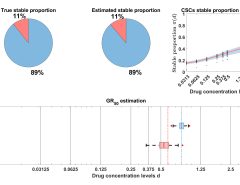SafeMedsAI
Elevator Pitch: Imagine a future where medications are not only effective but also heart-safe. SafeMedsAI uses breakthrough AI to redesign today’s medicines, reducing the risk of heart-related side effects. With SafeMedsAI, we’re not just developing drugs; we’re making them safer for everyone.
Concept
Leveraging AI to redesign and optimize medications for reduced cardiotoxicity
Objective
To use AI to create safer versions of existing and developing drugs by minimizing their cardiotoxic effects while preserving their therapeutic efficacy.
Solution
Utilizing CardioGenAI, a machine learning framework, to identify and redesign drugs for decreased adverse effects on the heart, especially targeting the hERG potassium ion channel.
Revenue Model
Licensing technology to pharmaceutical companies, offering consultancy for drug development projects, and creating partnerships for drug optimization services.
Target Market
Pharmaceutical companies and drug development startups seeking to enhance drug safety and efficacy through advanced AI technologies.
Expansion Plan
Initially targeting markets with high R&D spending in drug development, followed by expansion to emerging biotech regions. Plans also include further developing the AI model to cover a broader range of drug-induced toxicities.
Potential Challenges
High competition in AI healthcare, convincing pharmaceutical companies to adopt a new framework, and ensuring the accuracy and reliability of AI predictions.
Customer Problem
Drug-induced cardiotoxicity leading to serious health issues and the need for costly drug recalls or additional post-market surveillance.
Regulatory and Ethical Issues
Complying with global drug development standards and regulations, ensuring data privacy for proprietary compounds, and maintaining transparency in AI decision-making processes.
Disruptiveness
Radically improving drug safety and development efficiency, potentially saving billions in healthcare costs and significantly reducing drug-related health risks.
Check out our related research summary: here.



Leave a Reply